Honor is more precious than life: how the samurai in Japan did hara-kiri
By Pictolic https://pictolic.com/article/honor-is-more-precious-than-life-how-the-samurai-in-japan-did-hara-kiri.htmlA stunning series of vintage photos shows the life of Japanese samurai 130 years ago. Among the pictures there are also those that depict the hara-kiri ritual, aka seppuku. It was used by soldiers who wanted to die with honor, either voluntarily, or when they were captured by the enemy.
The ceremonial emptying of the intestines was actually part of a more complex ritual and was performed in the presence of the audience. In one of the pictures, a young samurai pierces his stomach with a katana.
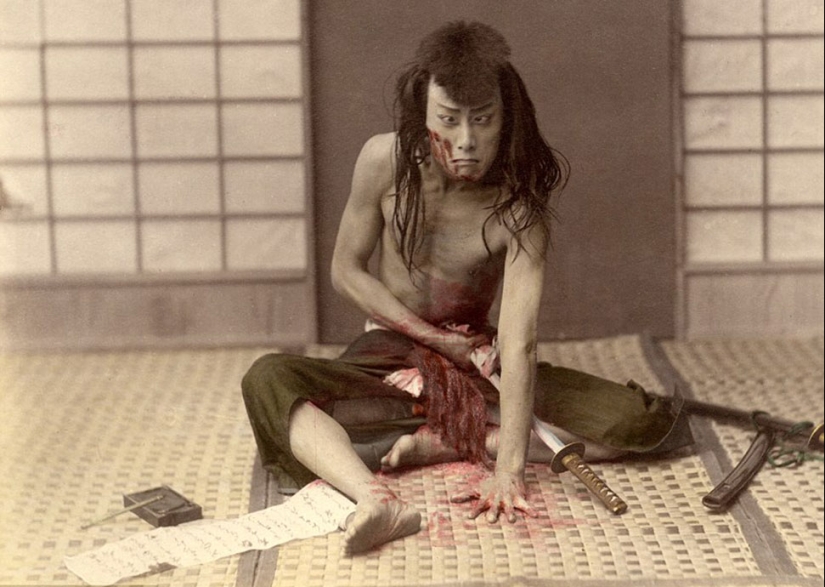
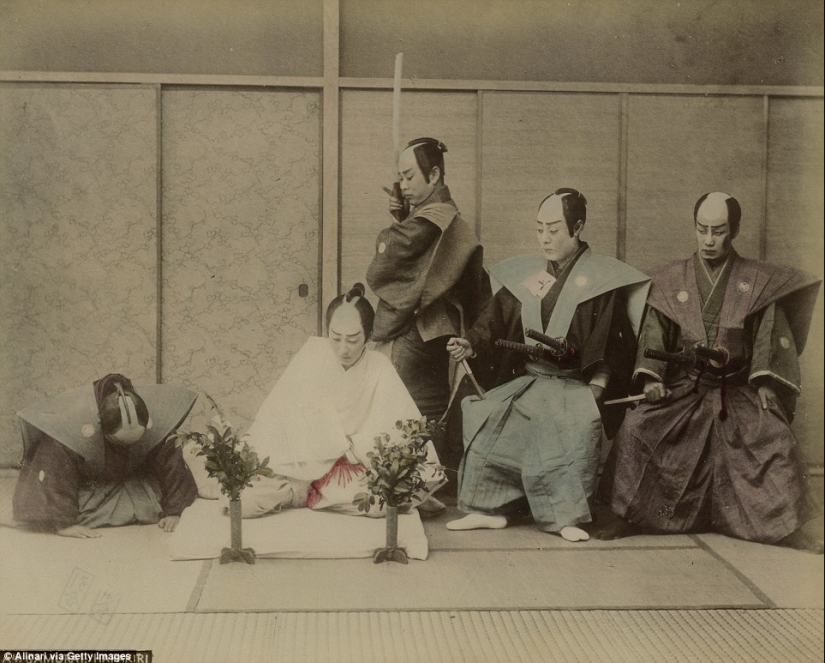
Warriors watch the hara-kiri of a samurai in white.
Samurai appeared in the Heian period around 710 AD with the aim of subjugating the locals in the Tohoku region in the northern part of Honshu Island. Over time, they became more and more powerful and became the military elite in Japan. They were the ruling class from the XII to the XIX century.
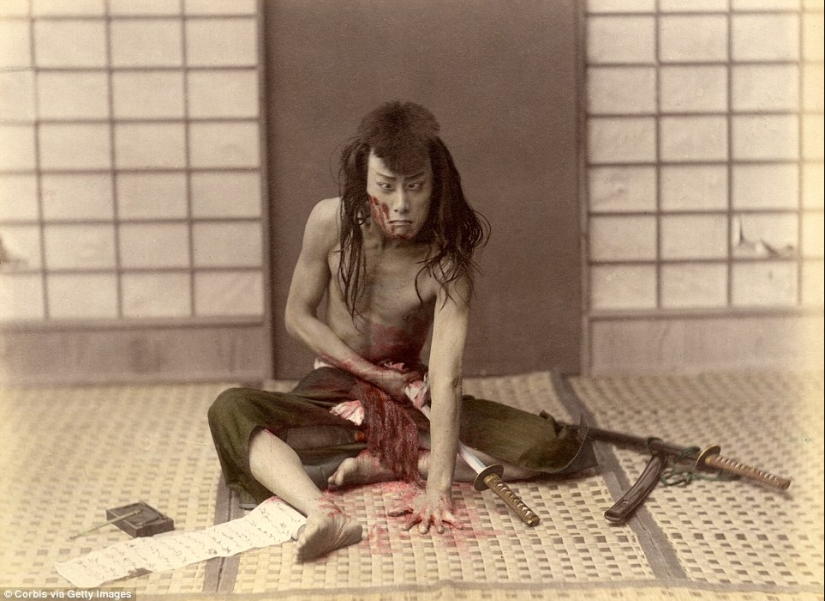
A samurai makes himself hara-kiri, or seppuku, a ritual of suicide by releasing intestines.
The samurai followed a code formed under the influence of Confucianism, which is known as Bushido — literally "the way of the warrior". The unwritten and unspoken code glorified modesty, loyalty, mastery of martial arts and honor until death. The rules also called the samurai to heroic courage, fierce defense of family pride and selfless devotion to the master.
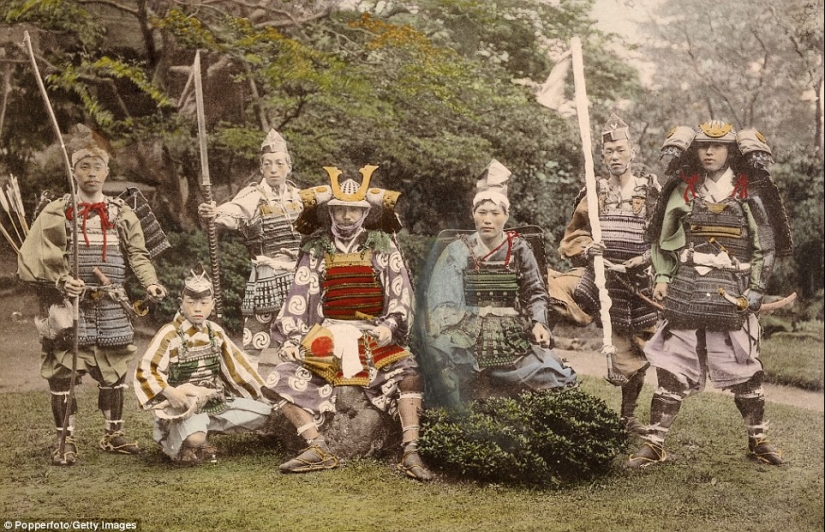
A group of samurai in ancient armor and with weapons, around 1870.
In the XV and XVI centuries, there were many warring factions, but later their number decreased. The fearless warriors wore plate armor and a variety of weapons, including a bow and arrow, spears, rifles and, of course, a samurai sword. However, in the Edo period, peace was maintained, and many samurai became teachers, artists or officials, since the need to master martial arts had lost its primary importance.
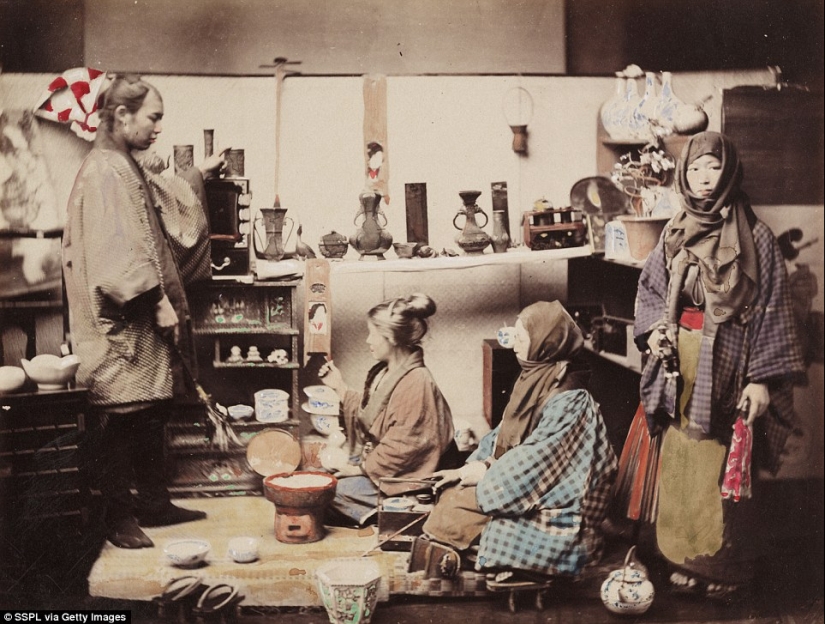
A picture taken and colored by Felice Beato: women in a traditional Japanese shop, the end of the XIX century.
When Emperor Meiji ascended to the throne in 1868, he began to abolish the powers of the samurai. At first, he deprived them of the right to be the only army in Japan and from 1873 began to form a Western-style conscription army.
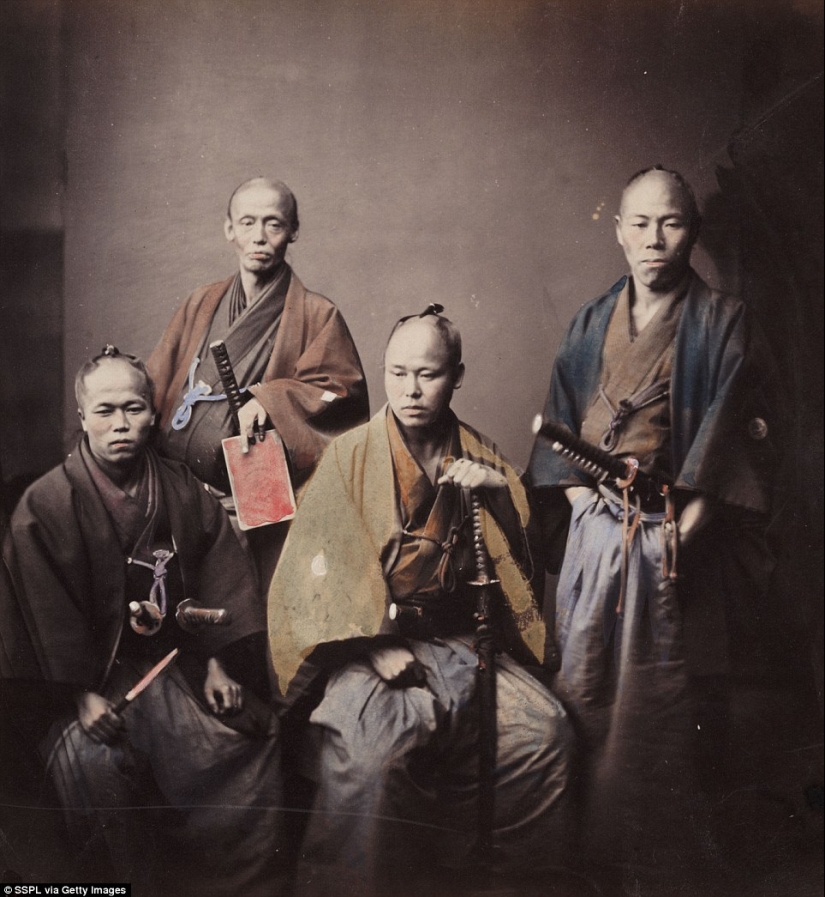
One of the first military photographers, the Venetian Felice Beato took this picture around 1862.
The samurai became Shizoku, united with another social class under the influence of the Meiji reforms, and the right to wear a katana was lost, as was the right to execute anyone who publicly showed disrespect to a samurai.
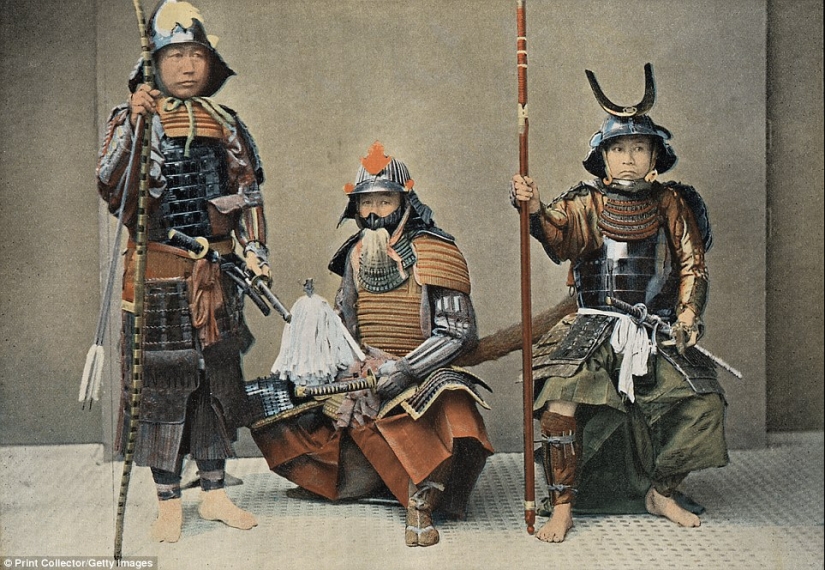
A group of samurai, circa 1890. Illustration for the booklet "In Japan: types, costumes and customs".
The term "shizoku" (untitled nobility) remained a part of Japanese culture until the end of World War II, but it was abandoned in 1947. Despite the fact that at the peak of their heyday, samurai made up no more than 10% of the population of Japan, their influence is still very noticeable in Japanese culture, especially in modern martial arts.
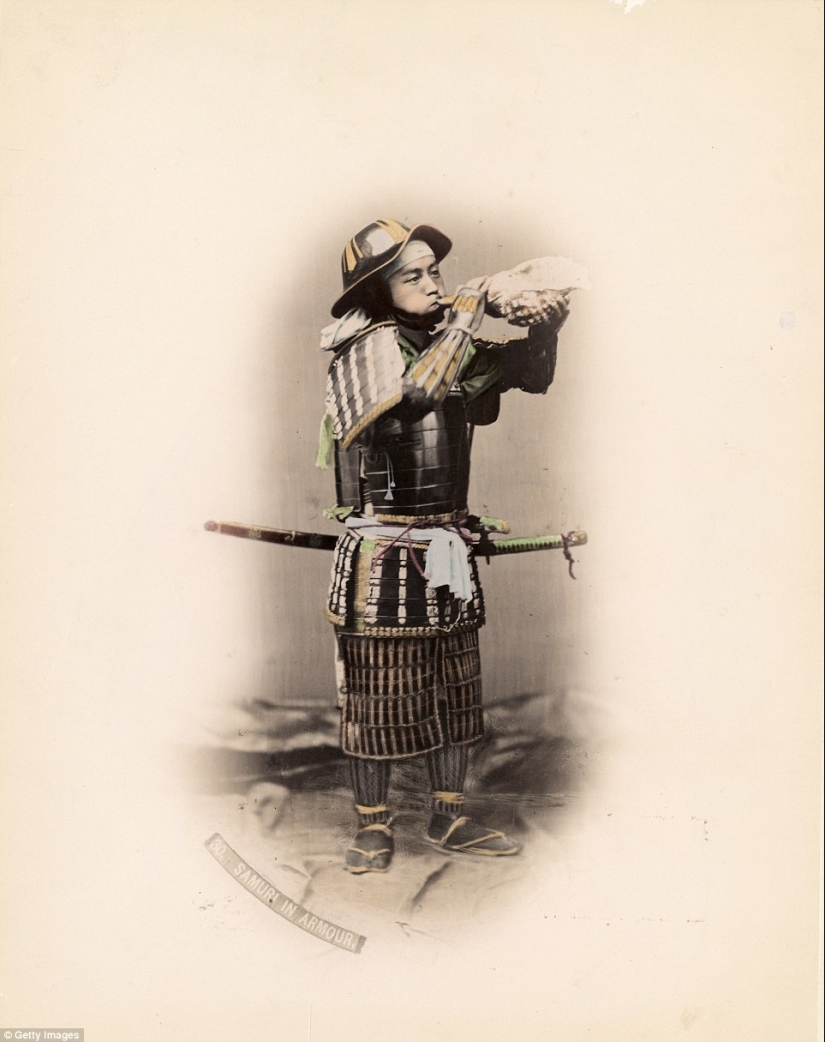
A samurai in a traditional outfit and shoes blows into a seashell.
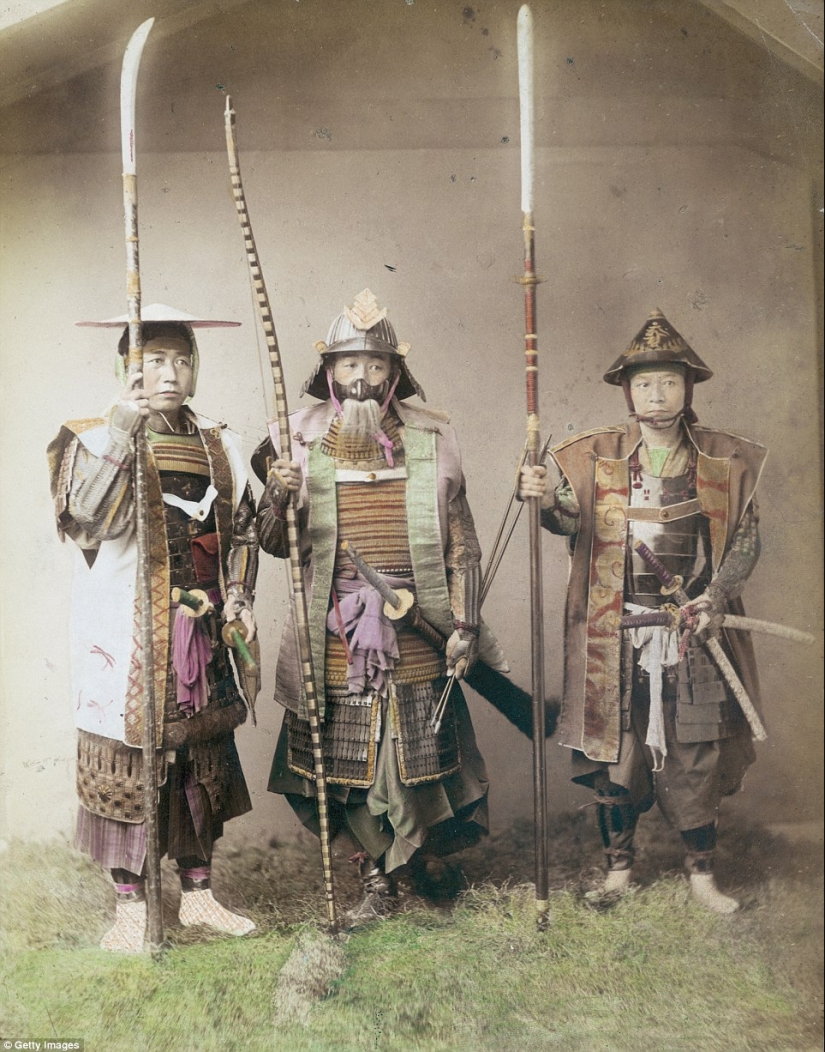
Three Japanese samurai in full uniform.
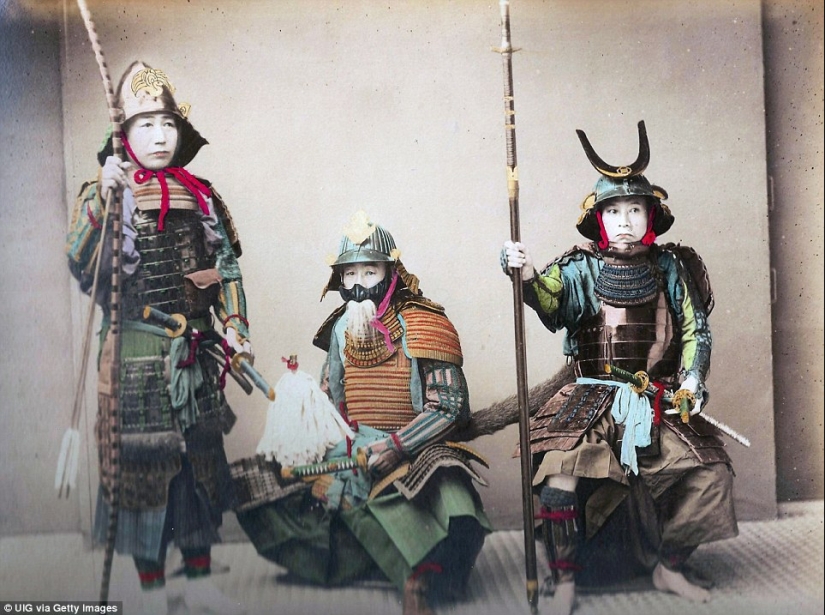
Bright traditional armor and ancient weapons on samurai, around 1890.
Keywords: Asia | Japan | History | Traditions | Retro | Suicide | Japanese | Honor | Retro photos | XIX century | 18+ | Tin | Samurai
Post News ArticleRecent articles

The celebrities we are used to seeing on the screen or in history textbooks, outside of all this hype around, are ordinary people. ...

At the beginning of their career, many actors grab any role – just to light up on the screen. And then, years later, when they ...
Related articles

Women always knew that beauty requires sacrifice, and were ready to go. In the best case, these victims were tired from walking at ...

In September 1839, the solemn laying of the new Cathedral of Christ the Saviour took place. The construction lasted almost 44 ...

The best Soviet artists went far beyond the propaganda art and created real masterpieces. -- >Alexander Labas (1900-1983) An artist ...

Arabic writing is very different from Cyrillic and Latin. And this difference is not only in the form of the letters themselves. In ...